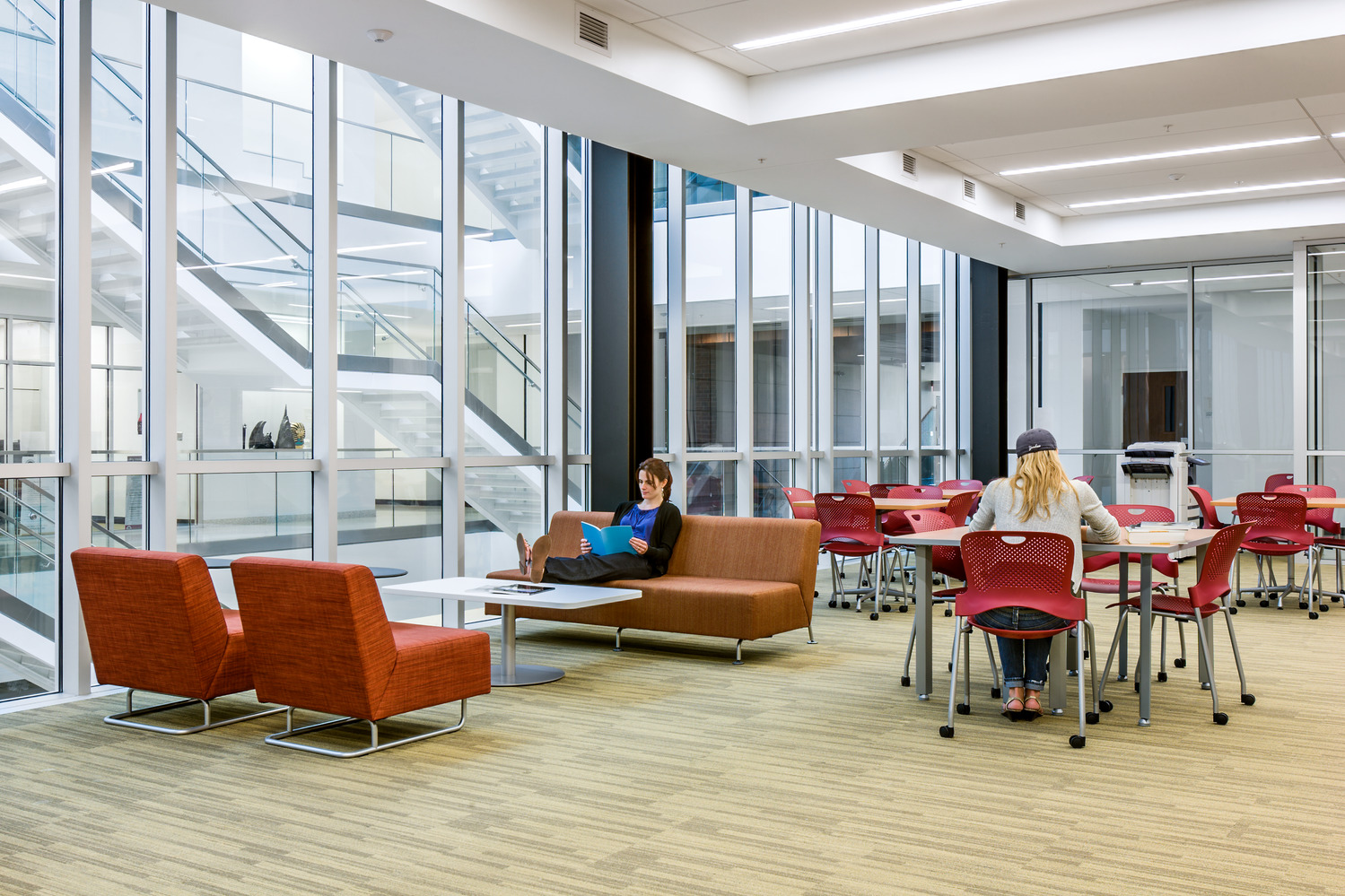


Nestled in the heart of campus, this ambitious renovation and expansion of a 1938 Collegiate Jacobean building breathes new life into a historic landmark—transforming it into a dynamic hub for cross-disciplinary learning. The design bridges past and future, creating an environment where contemporary academic life unfolds alongside a rich architectural heritage.

The project’s concept centers on convergence—of people, programs, and place. A daylit atrium anchors the addition, acting as a semi-public commons wrapped in transparent learning spaces. Like a city plaza, the atrium pulses with activity: group presentations, quiet study, gallery displays, athletic training, and even retail merchandising. Surrounding this vertical forum is a network of corridors—a varied “streetscape” that shifts in scale and material character, reflecting the diverse programs it serves.


Organized around this connective spine are multiple departments and colleges, each with a distinct identity yet unified in purpose. The ground level prioritizes student support and academic success, featuring an expansive learning studio with tutoring, advising, and collaborative study spaces. Its openness and accessibility signal a commitment to equity, engagement, and long-term student retention.
Architecturally, the project draws a deliberate contrast between eras. Crisp, modern materials in the addition highlight and honor the craftsmanship of the original Art Deco and Collegiate Jacobean interiors. Many original details were carefully restored and thoughtfully integrated, allowing the historic fabric of the building to tell its story while supporting new modes of learning.



Sustainability was integral throughout. The project achieved LEED Gold certification and meets the 2030 Challenge performance targets—underscoring the team’s commitment to long-term environmental responsibility. In recognition of its innovative approach to preservation and design integration, the project was honored with the AIA Florida Honor Award of Excellence for Historic Restoration and Addition.
More than a renovation, this project repositions a legacy building as a vital, living part of the campus—where history and innovation are not at odds, but in constant and creative dialogue.


Photographer: Adam Cohen